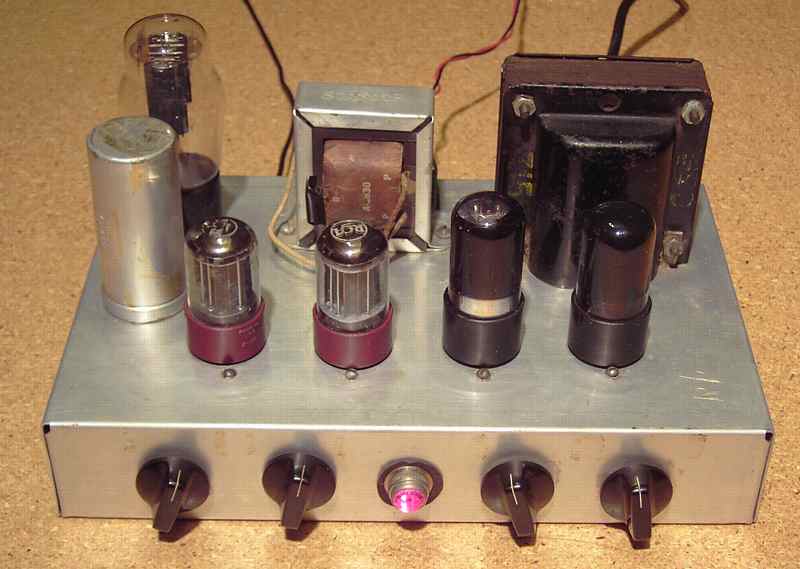
Revisiting a homebrew audio amplifier
Some years ago, as a teenager of 15, I decided to homebrew an audio amp I had seen in an article in a 1958 Radio-TV Experimenter magazine. The article showed construction of the Arkay A-12 Hi-Fi amplifier kit and was complete with schematic and under-chassis pictorial. The set had push-pull 6V6GT output tubes and was rated at 10 Watts RMS output. Since I had stripped a few junk radios and TV sets, I had accumulated many of the needed parts. I also ordered a blank chassis, four knobs, a tube, and a few resistors and capacitors from the Lafayette Radio catalog. This is the result.

When completed, the amp worked somewhat but had a great deal of distortion. I traced the problem to an error in the pictorial. The pictorial incorrectly shows a 220K ohm resistor connected to the second terminal on the terminal strip. It should go the first terminal (the left-most terminal on the pictorial). The schematic was correct. I moved the resistor and then enjoyed a properly working amp.
And then came stereo
In high school, I traded a car radio for another amp that also had a push-pull pair of 6V6 output tubes. The Bogen DB-110 amp was a kit that had been modified and had nearly all the parts for the two preamp tubes removed. I played with it for a bit but did not have a schematic. Therefore it remained as an unfinished project. I acquired a better integrated full stereo tube amp shortly thereafter so both 6V6 amps were shelved. With a resurgence in interest in tube amps, I decided to update the homebrew Arkay clone and finish the Bogen.
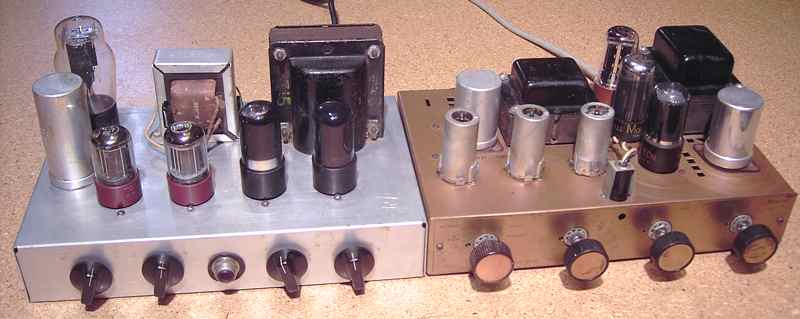
Updating the homebrew Arkay amp
I replaced all the coupling capacitors and other caps that see high voltage in the homebrew amp but not the tone control caps as that was not needed. I replaced the power cord with a safer three-wire grounded version and eliminated the now unnecessary cap from the AC power line to the chassis. I added a cap in the plate circuit of the magnetic cartridge preamp to keep B+ voltage off the input selector switch. Cleaning the controls and tube pins with deoxit completed the update. As expected, the amp performed properly after the work.
Completing and troubleshooting the Bogen DB-110 amp
The first task was to locate tubes for the Bogen. The schematic was easy to find on the web.
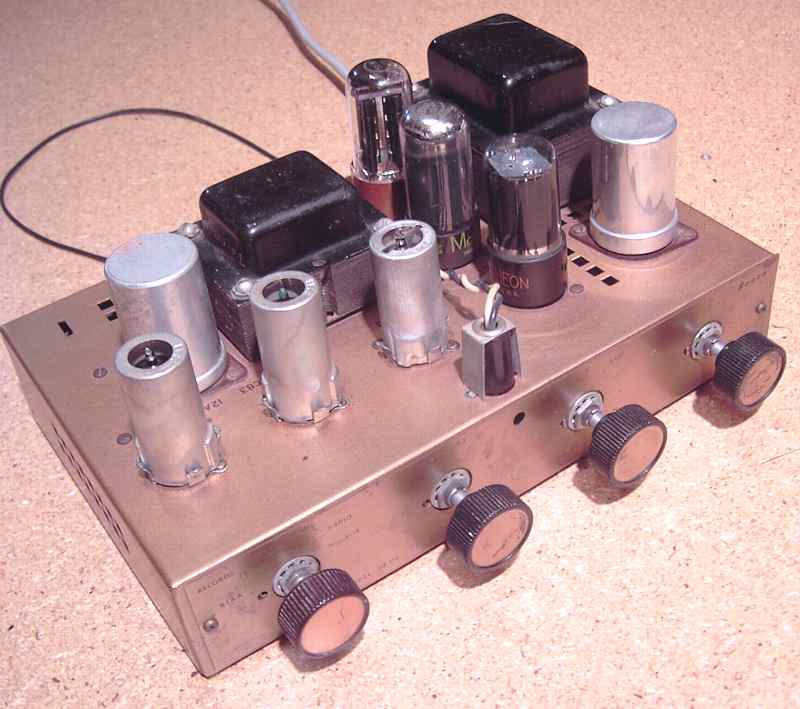
Kit building has always been a fun experience. Completing the amp was a taste of that fun. I found that the input switch had a couple of broken lugs. I compromised a bit and wired it in similar fashion to the homebrew amp by eliminating two of the tone pre-emphasis settings for "Pop" and "78" while leaving the "RIAA" setting. This amp also got the 3-wire power cord treatment. With computer power cords available cheaply, there is little excuse not to install such a safety improvement.
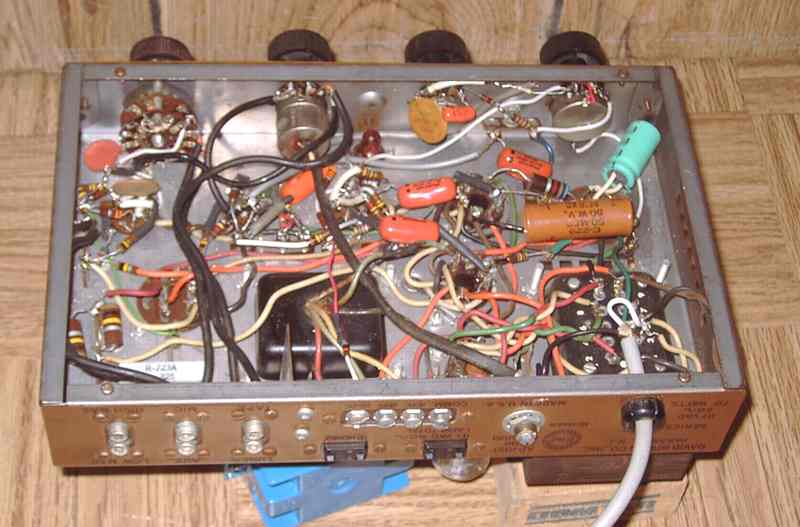
Hum and howl problems
After completing the amp wiring and cap replacement, I powered the amp and experienced a hum problem. Most of the hum stemmed from a weak electrolytic at the input side. I not only replaced the cap but increased the capacitance somewhat. The original design of only a 10 MFD input cap seemed a bit light. The rest of the hum was eliminated by reconnecting and properly adjusting the hum balance control that had been disconnected in its prior life. The inverse feedback connection had also been disconnected. I found out why that was done when I connected it. The amp responded with a howl of positive feedback. I swapped the output transformer plate connections to solve that problem.
After replacing a couple of resistors and cleaning all contacts and controls with deoxit, I was satisfied with the amp performance.
And a third amp, the Ampex A-692
I recently picked up this Ampex A-692 portable studio monitor system which contains another 6V6 push-pull 10 watt amp. The piece sold for $199.95 in 1957. The amp unit can be pulled out of the case if desired. The amp is relatively unique in that its entire tone compensation network, including the bass/treble control, is in the negative feedback loop.
The schematic is at this link.
The preamp stage is directly coupled to the phase inverter triodes. The only real coupling caps are the pair from the 12AU7 phase inverter/ driver triodes to the 6V6 tubes.As expected, those were slightly leaky and I replaced them. I also tested the large cap in the phase inverter circuit. It had no leakage.
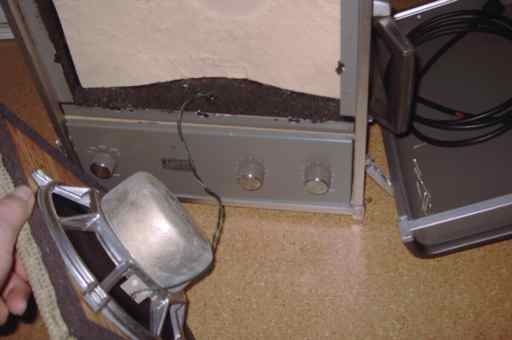
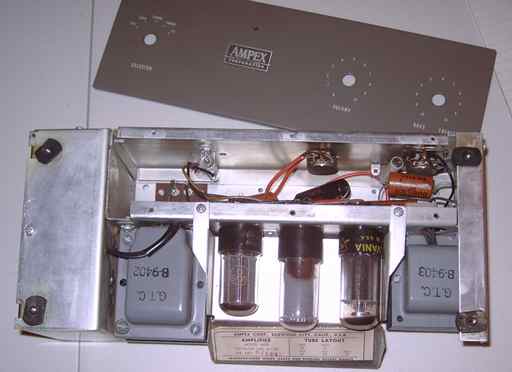
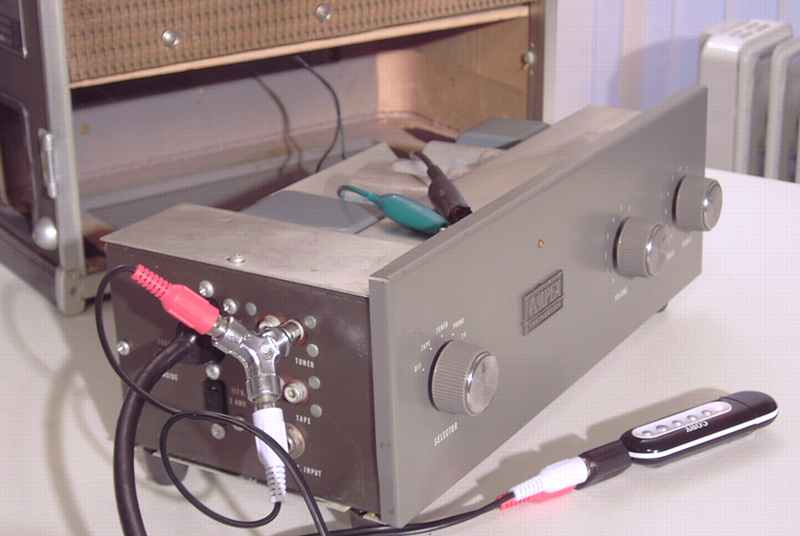
I plugged a small MP3 player into the Ampex. The mix of old and new technology and music from both the rock and roll era and contemporary was a fun test. The Ampex sounded great at handling the lows of bass guitar and drums as well as vocal mids and string highs. Using a few examples such as Roy Orbison ("Crying") and the Righteous Brothers ("Unchained Melody", Ghost soundtrack) to Berlin ("Take My Breath Away" - Top Gun soundtrack) to Celine Dion and Josh Groban and a variety of others, the Ampex proved to be a fine performing and rather potent system. This is certainly the way powered speakers should be made even today. I'm told the 8 inch die-cast speaker with rather large magnet structure is a JBL (James B. Lansing) design. It certainly sounds like a JBL.
Playing with the three
I tried each of the amps with the same JBL-designed 16 ohm speaker. I expected the three amps to sound much alike. However, it surprised me to find good (the Arkay clone), better (the Bogen), and best (the Ampex) even with my subjective listening. Both the Arkay clone and the Bogen needed a bit more gain and seemed limited at high output. I suspect the difference may be in the unique inverse feedback and tone circuit of the Ampex and possibly the match of the speaker to the amp.
I will follow up at some point with my HP audio generator and the oscilloscope, but for now I'm listening to the Ampex.
1-03-09
The Hallicrafters SX-25 receiver was the previous item on the bench.